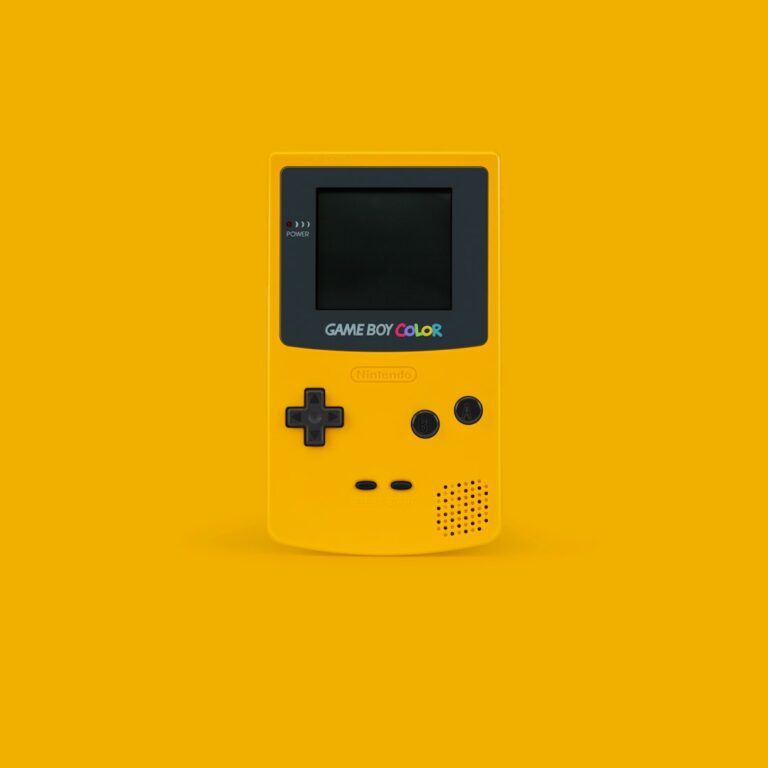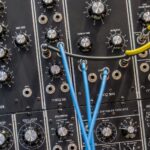Support our educational content for free when you purchase through links on our site. Learn more
What Makes a Synthwave Song? 10 Secrets to the Neon Sound 🎹 (2025)
Ever found yourself cruising down a neon-lit highway in your mind, with pulsating synths and retro beats transporting you straight to the 1980s? That’s the magic of synthwave — a genre that’s part nostalgia, part futuristic dream. But what exactly makes a synthwave song click and stand out in this vibrant, synth-soaked universe? Whether you’re a curious fan or an aspiring producer, this article uncovers the 10 essential elements that define the synthwave sound, from iconic synths and drum machines to the signature gated reverb snares and dreamy atmospheres.
We’ll also dive into the gear, production tips, vocal styles, and visual aesthetics that bring synthwave to life. Plus, we’ll explore its rich retro-futuristic history and how it’s influencing modern music culture. Ready to unlock the secrets behind those hypnotic synth melodies and glowing neon vibes? Let’s jump in and discover what truly makes a synthwave song unforgettable.
Key Takeaways
- Synthwave blends 1980s nostalgia with modern production, featuring analog synths, gated reverb snares, and pulsating basslines.
- The genre’s signature sound relies on classic gear like the Roland Juno-106 and TR-808 drum machine, or their software emulations.
- Sidechain compression and effects like delay and chorus create the dynamic, dreamy atmosphere essential to synthwave.
- Vocals are often sparse or heavily processed with vocoders, maintaining the retro-futuristic vibe.
- Visual aesthetics — neon grids, sunsets, and cyberpunk imagery — are integral to the synthwave experience.
- Beginners can start making synthwave today using popular DAWs like Ableton Live and affordable synth plugins such as Arturia V Collection or TAL-U-No-LX.
👉 CHECK PRICE on:
- Roland Juno-106: Amazon | Roland Official
- Arturia V Collection: Amazon | Arturia Official
- TAL-U-No-LX: Amazon | TAL Software
Table of Contents
- Quick Tips and Facts About Synthwave Music 🎛️⚡
- The Neon Origins: A Retro-Futuristic History of Synthwave 🎶🕹️
- What Is Synthwave Music? Defining the Sound and Style 🎹✨
- 10 Essential Elements That Make a Synthwave Song Stand Out 🔥🎧
- Synthwave Production Secrets: How to Craft Your Own Retro Soundscape 🎛️🎚️
- Synthwave Synths and Gear: The Ultimate Hardware and Software Guide 🎹💻
- Vocals in Synthwave: To Sing or Not to Sing? Exploring Vocal Styles 🎤🎵
- Visual Aesthetics and Album Art: The Neon Glow Beyond the Sound 🌃🎨
- Top 15 Synthwave Artists and Tracks That Define the Genre 🎶👾
- How to Start Making Synthwave Today: Beginner’s Roadmap 🚀🎛️
- Common Mistakes to Avoid When Producing Synthwave Music ❌🎹
- Synthwave Subgenres and Influences: Exploring the Neon Spectrum 🌈🎶
- How Synthwave Fits Into Modern Music Culture and Media 🎥🎮
- Conclusion: Why Synthwave Continues to Captivate Our Retro Hearts ❤️🎵
- Recommended Links for Synthwave Fans and Producers 🌐🎧
- Frequently Asked Questions About Synthwave Music ❓🎹
- Reference Links and Further Reading 📚🔗
Quick Tips and Facts About Synthwave Music 🎛️⚡
Welcome to the neon-lit world of synthwave! If you’re wondering what makes a synthwave song truly stand out, you’re in the right place. At Synth Pop™, we’ve jammed to countless synthwave tracks and dissected their magic. Here are some quick facts and tips to get you started:
- Synthwave is a love letter to the 1980s — think VHS tapes, neon grids, and arcade games. It’s all about evoking nostalgia with modern polish.
- Typical tempo ranges from 80 to 120 BPM, but can go higher for upbeat vibes.
- The signature sounds include lush analog synths, gated reverb snares, pulsating basslines, and dreamy pads.
- Drum machines like the Roland TR-808 and LinnDrum are synthwave staples.
- Sidechain compression is your best friend for that pumping, dynamic feel.
- Vocals are often sparse or heavily processed with vocoders to maintain that retro-futuristic vibe.
- Visuals matter! Album art and music videos often feature neon grids, sunsets, and cyberpunk aesthetics.
Want to dive deeper? Check out our full guide on synthwave music for everything you need to know!
The Neon Origins: A Retro-Futuristic History of Synthwave 🎶🕹️
Synthwave didn’t just appear out of nowhere — it’s a musical time machine fueled by 80s pop culture, movies, and video games. Here’s a quick trip down memory lane:
- Roots in 1980s Synth-Pop and Film Scores: Think John Carpenter’s eerie synth scores, Giorgio Moroder’s disco synths, and the catchy hooks of bands like Depeche Mode and New Order.
- Influence of 80s Movies and TV: Films like Blade Runner, Drive, and series like Stranger Things revived interest in retro synth sounds, inspiring a new generation of producers.
- Early 2000s Revival: Artists like Kavinsky and College pioneered the genre with tracks like Testarossa Autodrive and A Real Hero.
- Subgenres Emerge: From the dreamy Dreamwave to the darker Darksynth, synthwave expanded its neon palette.
Synthwave is more than music — it’s a cultural movement that blends nostalgia with futuristic imagination. For a detailed history, check out Native Instruments’ Synthwave Deep Dive.
What Is Synthwave Music? Defining the Sound and Style 🎹✨
At its core, synthwave is a genre that channels the spirit of the 1980s through modern production techniques. But what exactly defines its sound?
Key Characteristics:
- Analog Synthesizers: Warm, lush pads and leads from synths like the Roland Juno-106, Yamaha DX7, and software emulations like Arturia’s V Collection.
- Drum Machines: Classic 80s drum sounds, especially the Roland TR-808 and LinnDrum, with heavy gated reverb on snares.
- Basslines: Often pulsating and rhythmic, sometimes using Moog-style bass synths or emulations like TAL-BassLine.
- Melodies: Catchy, sometimes melancholic, often simple but evocative.
- Atmosphere: Dreamy, nostalgic, sometimes cinematic with reverb and delay effects.
Synthwave also embraces visual aesthetics — neon colors, grids, sunsets, and cyberpunk vibes — making it a full sensory experience. Curious about the production side? Keep reading!
10 Essential Elements That Make a Synthwave Song Stand Out 🔥🎧
Ready to break down the anatomy of a synthwave track? Here are the 10 essential elements that give synthwave its unmistakable vibe:
| Element | Description | Why It Matters |
|---|---|---|
| 1. Analog Synth Leads | Bright, warm synth melodies with portamento/glide | Creates the iconic retro-futuristic sound |
| 2. Pulsating Bass | Rhythmic basslines, often Moog-style | Drives the groove and energy |
| 3. Gated Reverb Snare | Snare hits with a sharp, echoing tail | Adds that classic 80s drum machine vibe |
| 4. Drum Machines | Use of TR-808, LinnDrum, or samples | Authentic retro percussion |
| 5. Arpeggiators | Repetitive synth patterns that add movement | Adds hypnotic texture |
| 6. Pads and Atmospheres | Lush, dreamy synth layers | Builds mood and depth |
| 7. Sidechain Compression | Pumping effect syncing synths with drums | Adds dynamic rhythm and energy |
| 8. Simple Chord Progressions | Often major or minor triads with 80s flavor | Keeps the vibe nostalgic and catchy |
| 9. Effects: Delay & Reverb | Creates space and dreamy textures | Essential for that ethereal synthwave feel |
| 10. Visual Aesthetic | Neon colors, grids, retro-futuristic imagery | Completes the immersive experience |
Synthwave is a careful balance of nostalgia and modern production — miss one element, and the magic fades. For a step-by-step production guide, see our next section!
Synthwave Production Secrets: How to Craft Your Own Retro Soundscape 🎛️🎚️
So, you want to make a synthwave track? Here’s a detailed roadmap from the Synth Pop™ crew, inspired by pros like Native Instruments and EDMProd:
Step 1: Set Your Tempo and Key
- Typical tempos: 80-120 BPM for chill vibes, up to 140 BPM for energetic tracks.
- Choose a key that suits your mood — minor keys for dark synthwave, major for upbeat.
Step 2: Build Your Drum Track
- Use samples or plugins emulating the Roland TR-808 or LinnDrum.
- Program a basic 4/4 beat: kick on every beat, snare on 2 and 4.
- Add hi-hats on 16th notes, with velocity variation for groove.
- Apply gated reverb on snares for that classic 80s snap.
Step 3: Create the Bassline
- Use a Moog-style synth or plugin like TAL-BassLine or Arturia Mini V.
- Follow the root notes of your chord progression, with rhythmic variation.
- Sidechain the bass to the kick drum for that pumping effect.
Step 4: Design Synth Leads and Pads
- Pick warm analog synth presets or create your own with saw waves and glide.
- Use arpeggiators or sequencers for movement.
- Layer pads with lush reverb and delay to build atmosphere.
Step 5: Add Effects and Atmosphere
- Use delay, chorus, phaser, and reverb generously but tastefully.
- Add white noise sweeps or risers for transitions.
- Consider subtle vinyl crackle or tape hiss for texture.
Step 6: Arrange and Mix
- Structure your track with intro, verse, chorus, bridge, and outro.
- Use EQ to carve space for each element.
- Apply sidechain compression on synths and bass.
- Master with gentle compression and limiting to keep dynamics alive.
Want a detailed preset list and plugin recommendations? We’ve got you covered in the next section!
Synthwave Synths and Gear: The Ultimate Hardware and Software Guide 🎹💻
Synthwave thrives on the right gear — whether hardware or software. Here’s our expert breakdown of the best synths and tools to nail that retro sound:
| Gear Type | Recommended Models & Plugins | Why We Love Them |
|---|---|---|
| Hardware Synths | Roland Juno-106, Korg Minilogue XD, Moog Sub 37 | Classic analog warmth and hands-on control |
| Software Synths | Arturia V Collection, TAL-U-No-LX, OB-Xd (free), Serum | Emulations of vintage synths with modern flexibility |
| Drum Machines | Roland TR-808, LinnDrum (samples or hardware) | Iconic 80s drum sounds |
| DAWs | Ableton Live, FL Studio, Logic Pro X | Powerful sequencing and effects |
| Effects Plugins | Valhalla VintageVerb, TAL Chorus LX, FabFilter Pro-Q | Essential for lush reverb, chorus, and EQ |
| Sidechain Tools | Cableguys VolumeShaper, Xfer LFO Tool | Precise pumping effects |
Why Hardware Still Matters
There’s something magical about turning physical knobs on a Juno-106 or Moog. The warmth and unpredictability of analog gear can’t be fully replicated digitally. But software synths have come a long way, offering affordable and flexible options for bedroom producers.
Our Favorite Synthwave Plugin Setup
- Arturia Juno-106 V for classic pads and leads
- TAL-U-No-LX for lush analog tones
- OB-Xd for bass and brass sounds (free and open source!)
- Valhalla VintageVerb for dreamy spaces
- Native Instruments Komplete 14 for a full arsenal, including Massive and Super 8 synths
👉 CHECK PRICE on:
- Roland Juno-106: Amazon | Roland Official
- Arturia V Collection: Amazon | Arturia Official
- TAL-U-No-LX: Amazon | TAL Software
Vocals in Synthwave: To Sing or Not to Sing? Exploring Vocal Styles 🎤🎵
Vocals in synthwave are a bit like the cherry on top — sometimes present, sometimes absent, but always impactful.
Vocal Approaches in Synthwave
- Instrumental Focus: Many synthwave tracks are purely instrumental, emphasizing the mood and synth textures.
- Processed Vocals: When vocals appear, they’re often heavily treated with vocoders, talkboxes, or heavy reverb/delay to sound robotic or ethereal.
- Minimalist Lyrics: Lyrics tend to be sparse and nostalgic, often about themes like night drives, neon dreams, or futuristic love.
- Guest Vocalists: Some artists collaborate with vocalists to add emotional depth, e.g., The Midnight’s collaboration with Nikki Flores.
Tools for Synthwave Vocals
- TAL Vocoder (free plugin): Classic vocoder effect for that robotic 80s vibe.
- iZotope Nectar: For vocal processing and harmonizing.
- Antares Auto-Tune: Used sparingly to keep the retro feel without sounding too modern.
Our take? Vocals can add a human touch, but don’t overdo it — synthwave’s charm lies in its atmospheric, sometimes mysterious soundscapes.
Visual Aesthetics and Album Art: The Neon Glow Beyond the Sound 🌃🎨
Synthwave isn’t just about sound — it’s a full sensory experience where visuals play a starring role. The genre’s iconic album covers and videos often feature:
- Neon grids and sunsets: Think pinks, purples, and blues fading into a digital horizon.
- Retro-futuristic cityscapes: Chrome cars, palm trees, and cyberpunk skylines.
- Pixel art and VHS-style effects: To evoke that analog nostalgia.
- Typography: Bold, angular fonts reminiscent of 80s arcade games and movie posters.
Artists like Kavinsky and The Midnight nail this aesthetic, making their visuals inseparable from their music. If you want to create synthwave visuals, tools like Adobe Photoshop with neon brushes or Blender for 3D scenes are great starting points.
For inspiration, check out our 80s Synth Pop category for iconic synthwave visuals and album art.
Top 15 Synthwave Artists and Tracks That Define the Genre 🎶👾
No discussion about synthwave is complete without shining a spotlight on the artists who shaped the scene. Here are our top 15 synthwave artists and tracks that every fan should know:
| Artist | Track | Why It’s Essential |
|---|---|---|
| Kavinsky | Testarossa Autodrive | The quintessential outrun synthwave anthem |
| College | A Real Hero | Iconic track featured in Drive |
| The Midnight | Sunset | Dreamy vocals and lush synths |
| FM-84 | Running in the Night | Uplifting melodies and catchy hooks |
| Gunship | Tech Noir | Dark synthwave with cinematic flair |
| Lazerhawk | Overdrive | High-energy synth riffs and driving beats |
| Timecop1983 | On the Run | Chillwave and nostalgic vibes |
| Carpenter Brut | Turbo Killer | Darksynth with aggressive synths |
| M83 | Midnight City | Cross-genre hit with synthwave elements |
| Miami Nights 1984 | Accelerated | Smooth, retro-futuristic soundscape |
| Dynatron | Pulse Power | Spacey synth textures and driving bass |
| Perturbator | Future Club | Dark synthwave with cyberpunk edge |
| I-f | Space Invaders Are Smoking Grass | Early synthwave classic |
| VHS Glitch | Night Drive | Atmospheric and moody synthwave |
| Waveshaper | 198X | Pure retro synth goodness |
Dive into these tracks and you’ll hear the full spectrum of synthwave’s moods and styles. For more iconic synth pop and synthwave songs, visit our Iconic Synth Pop Songs collection.
How to Start Making Synthwave Today: Beginner’s Roadmap 🚀🎛️
Ready to jump into synthwave production? Here’s a step-by-step beginner’s roadmap from Synth Pop™ to get you grooving in no time:
Step 1: Choose Your DAW
- Popular choices: Ableton Live, FL Studio, Logic Pro X.
- Pick one that fits your workflow and budget.
Step 2: Gather Essential Plugins and Samples
- Start with free or affordable synth plugins like OB-Xd (free), TAL-U-No-LX, or Arturia V Collection demos.
- Download classic 80s drum samples or use drum machine plugins like Roland TR-808 emulators.
Step 3: Learn Basic Music Theory
- Focus on simple chord progressions (major/minor triads).
- Use free tools like SoundGrail or built-in DAW scales to help.
Step 4: Create a Drum Pattern
- Program a basic 4/4 beat with kick, snare, and hi-hats.
- Add gated reverb on snares for that vintage vibe.
Step 5: Design Your Synth Sounds
- Experiment with saw waves, glide, and filter sweeps.
- Layer pads for atmosphere and add arpeggiators for movement.
Step 6: Arrange Your Track
- Follow a simple structure: intro, verse, chorus, bridge, outro.
- Use automation for filter sweeps and effects transitions.
Step 7: Mix and Master
- Use EQ to carve space for each element.
- Apply sidechain compression to create pumping dynamics.
- Use mastering plugins like iZotope Ozone for polish.
Step 8: Share Your Music
- Upload to platforms like SoundCloud, Bandcamp, or YouTube.
- Join synthwave communities on Reddit or Discord for feedback.
Remember, synthwave is as much about feel and vibe as technical skill. Don’t be afraid to experiment and embrace happy accidents!
Common Mistakes to Avoid When Producing Synthwave Music ❌🎹
We’ve seen many budding synthwave producers fall into these traps — don’t be one of them!
- ❌ Overcomplicating the Arrangement: Synthwave thrives on simplicity and repetition. Too many elements can clutter the mix.
- ❌ Neglecting Drum Sound Design: Using generic drums kills the vibe. Invest time in authentic 80s drum samples or synthesize your own.
- ❌ Overusing Modern Effects: Avoid heavy autotune or modern EDM-style drops; keep effects vintage and tasteful.
- ❌ Ignoring Sidechain Compression: Without sidechain, synthwave loses its signature groove and energy.
- ❌ Skipping the Visuals: Synthwave is a multimedia experience; neglecting visuals can limit your impact.
- ❌ Forgetting the Mood: Synthwave is about nostalgia and atmosphere — if your track feels cold or sterile, rethink your sound choices.
Keep these in mind, and you’ll be cruising the neon highway in style.
Synthwave Subgenres and Influences: Exploring the Neon Spectrum 🌈🎶
Synthwave is a colorful genre with many shades. Here’s a quick tour of its main subgenres and influences:
| Subgenre | Description | Notable Artists |
|---|---|---|
| Retrowave | Classic 80s nostalgia, upbeat and melodic | FM-84, The Midnight |
| Outrun | High-energy, driving beats inspired by racing games | Kavinsky, Lazerhawk |
| Dreamwave | Chill, atmospheric, and dreamy synth textures | Timecop1983, Waveshaper |
| Darksynth | Aggressive, heavy synths with horror and cyberpunk themes | Carpenter Brut, Perturbator |
| Vaporwave | Slower, chopped and screwed samples with surreal aesthetics | Macintosh Plus, Saint Pepsi |
| Chillwave | Soft, lo-fi synths with relaxed vibes | Washed Out, Toro y Moi |
Synthwave draws heavily from 80s synth-pop, film scores, and video game soundtracks, blending these influences into a vibrant sonic palette. Explore more in our None of the Above category for genre-bending synth sounds.
How Synthwave Fits Into Modern Music Culture and Media 🎥🎮
Synthwave’s retro charm has found a second life in modern pop culture:
- Film and TV: Soundtracks for Drive, Stranger Things, and Turbo Kid have popularized synthwave’s cinematic sound.
- Video Games: Titles like Hotline Miami and Katana ZERO use synthwave to amplify their neon-soaked aesthetics.
- Fashion and Design: Neon colors, retro-futuristic styles, and 80s-inspired visuals have influenced fashion runways and graphic design.
- Streaming and Social Media: Platforms like YouTube and Spotify have dedicated synthwave playlists, helping new artists reach global audiences.
Synthwave’s blend of nostalgia and futurism resonates with millennials and Gen Z alike, proving that sometimes, the past is the coolest place to be.
Conclusion: Why Synthwave Continues to Captivate Our Retro Hearts ❤️🎵
Synthwave is more than just a genre — it’s a vibrant cultural phenomenon that fuses the nostalgia of the 1980s with modern production wizardry. From its signature analog synth leads and pulsating basslines to the iconic gated reverb snares and neon-soaked visuals, synthwave creates an immersive experience that transports listeners to a retro-futuristic dreamscape.
Throughout this guide, we’ve unpacked the essential elements that make a synthwave song shine, shared insider production secrets, and explored the gear that helps artists capture that unmistakable sound. Whether you’re a curious fan or an aspiring producer, synthwave offers a playground of creativity where vintage vibes meet fresh innovation.
If you’re ready to start your synthwave journey, remember: simplicity, atmosphere, and emotion are your best friends. Embrace the imperfections of analog warmth, experiment with classic drum machines or their software emulations, and don’t forget to wrap your music in the glowing aesthetics that define the genre.
So, are you ready to hit the neon highway and craft your own synthwave masterpiece? We’re confident you’ve got the tools and inspiration to make waves in this electrifying genre. Keep exploring, keep experimenting, and most importantly, keep that retro spirit alive!
Recommended Links for Synthwave Fans and Producers 🌐🎧
Ready to gear up or dive deeper? Here are some of our top picks for synthwave production essentials and reading:
-
Roland Juno-106 Synthesizer:
Amazon | Roland Official Website -
Arturia V Collection (Vintage Synth Emulations):
Amazon | Arturia Official Website -
TAL-U-No-LX Analog Synth Plugin:
Amazon | TAL Software -
Native Instruments Komplete 14 (Synth Bundle):
Amazon | Native Instruments Official -
iZotope Ozone 10 (Mastering Suite):
Amazon | iZotope Official -
Books on Synthwave and 80s Music Culture:
Frequently Asked Questions About Synthwave Music ❓🎹
What characterizes the synthwave music genre and its distinctive sound?
Synthwave is characterized by its retro 1980s-inspired sound, featuring analog-style synthesizers, gated reverb on snares, pulsating basslines, and lush pads. The genre blends nostalgia with modern production, often evoking cinematic atmospheres reminiscent of 80s movies, video games, and pop culture. Its distinctive sound is marked by warm synth leads, rhythmic arpeggiators, and a balance between upbeat and dreamy moods.
How do artists create the nostalgic feel often associated with synthwave songs?
Artists achieve nostalgia by using vintage synth sounds or their modern emulations, classic drum machine samples (like the Roland TR-808), and production techniques such as gated reverb and sidechain compression. They also incorporate simple chord progressions and melodies that recall 80s pop music. The use of effects like delay, chorus, and analog-style saturation adds warmth and depth, while visual aesthetics and thematic elements reinforce the retro-futuristic vibe.
What role do synthesizers play in the production of synthwave music?
Synthesizers are the heart and soul of synthwave. They provide the signature sounds — from bright leads and lush pads to deep basslines and arpeggiated sequences. Both hardware synths (e.g., Roland Juno-106, Moog Sub 37) and software plugins (e.g., Arturia V Collection, OB-Xd) are used to recreate or innovate on classic analog tones. Synths enable producers to craft the atmospheric textures and melodic hooks that define the genre.
What are the typical tempo and time signature ranges for synthwave tracks?
Synthwave tracks usually have a tempo ranging between 80 and 120 BPM, with some upbeat tracks pushing up to 140 BPM. The time signature is almost always 4/4, maintaining a steady, danceable rhythm that supports the genre’s driving beats and hypnotic synth patterns.
How does synthwave draw inspiration from 80s and 90s pop culture and music?
Synthwave draws heavily from the soundtracks, aesthetics, and cultural motifs of the 80s and early 90s. This includes influences from synth-pop bands (Depeche Mode, New Order), film scores (John Carpenter’s work), video games, and neon-lit cyberpunk visuals. The genre channels the era’s optimism, futurism, and sometimes dystopian themes, blending them with modern production to create a fresh yet familiar sound.
What are the key differences between synthwave and other electronic music genres like techno and trance?
While techno and trance often focus on repetitive, high-energy beats with futuristic or minimalistic soundscapes, synthwave is rooted in nostalgia, emphasizing melodic synth lines, vintage drum sounds, and cinematic atmospheres. Synthwave tends to have slower tempos and a warmer, more analog sound palette, whereas techno and trance often use digital synths and faster, more driving rhythms.
Can synthwave music be created using only software plugins and digital audio workstations, or are hardware synthesizers necessary?
✅ You can absolutely create authentic synthwave music using only software plugins and DAWs. Modern synth plugins like Arturia V Collection, TAL-U-No-LX, and free options like OB-Xd offer excellent analog emulations. DAWs like Ableton Live and FL Studio provide all the sequencing, effects, and mixing tools needed. However, some producers prefer hardware synths for their tactile control and unique analog warmth, but they are not mandatory.
Reference Links and Further Reading 📚🔗
- Native Instruments: Synthwave Deep Dive
- EDMProd: How to Make Synthwave
- BVKER: How To Make Synthwave Music
- Roland Official Website: Roland Juno-106
- Arturia Official Website: V Collection
- TAL Software: TAL-U-No-LX
- iZotope Official: Ozone 10
- Wikipedia: Synthwave
- Synth Pop™ related article: Synthwave Music Explained




